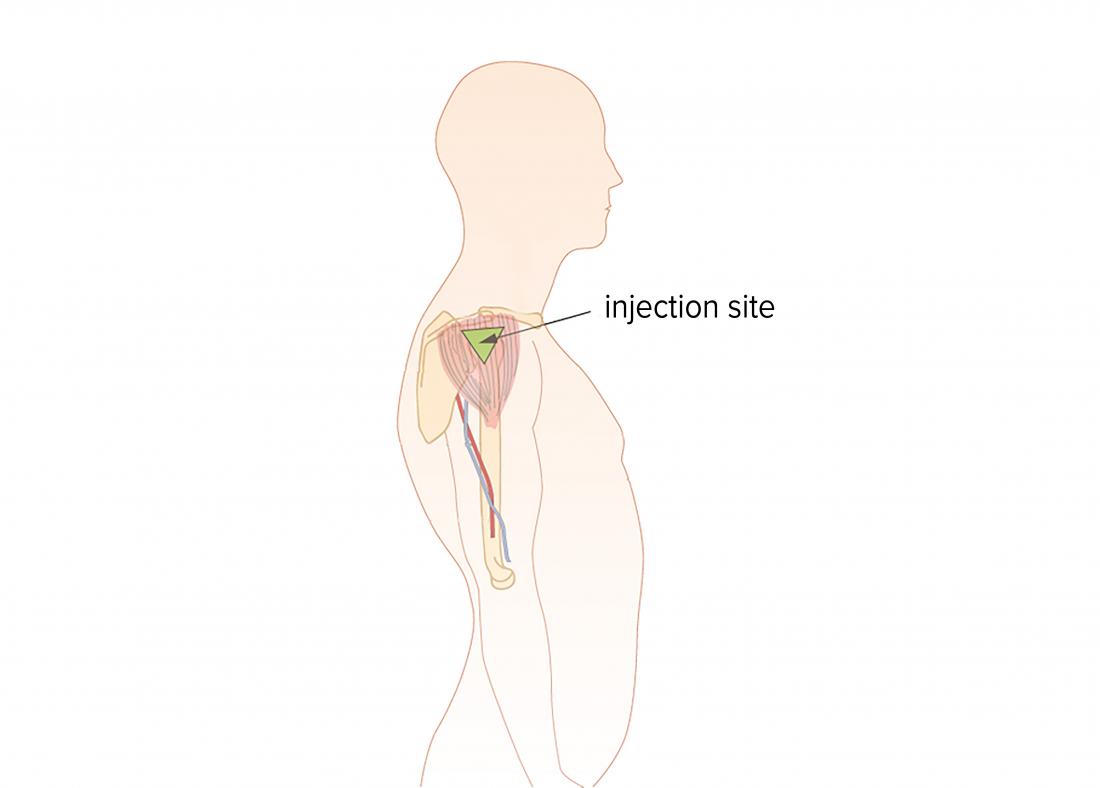

Wait for 10 seconds to allow the drug to diffuse into the tissue and then quickly withdraw the needle (Dougherty and Lister, 2015).Depress the plunger slowly at a rate of 1ml/10 seconds this aids absorption of the drug and reduces pain (Dougherty and Lister, 2015).Aspiration is only required when the DG site is used, which is not recommended (Greenway, 2014 Malkin, 2008). Aspiration to check whether the needle is in a blood vessel is not usually necessary (PHE, 2013).This prevents accidental depression of the plunger during insertion of the needle (Malkin, 2008) (Fig 3). Insert the needle at a 90-degree angle using a dart-like action.A Z-track technique can be used to prevent backtracking and leakage from the injection site (Fig 2).This displaces the subcutaneous tissue and aids needle entry (Dougherty and Lister, 2015).
#Im injection sites skin#
Hold the syringe and needle in your dominant hand and gently stretch the skin around the injection site using the non-dominant hand.Use distraction and relaxation techniques to reduce pain if needed (Box 1). Inform the patient you are going to carry out the procedure.If skin cleansing is considered necessary, swab for 30 seconds with isopropyl alcohol and allow to dry for 30 seconds (Dougherty and Lister, 2015).Ensure the skin is clean and follow local policy on skin cleansing.If gloves are considered necessary, following the risk assessment, these should be applied.If any of these are present, select a different site. Check the site for signs of oedema, infection or skin lesions.The site is influenced by the assessment of the patient, the drug and the volume to be injected (Table 1) (Dougherty and Lister, 2015). Position the patient comfortably with the injection site exposed (Fig 1).Check the patient’s identity, according to local medicines management policy.Place the filled syringe in a tray and take it to the patient, along with a sharps bin so the used sharps can be disposed of immediately after the procedure.Dispose of the used needle in a sharps container according to local policy.A safety-engineered needle should be used as this reduces the risk of sharps injury. Doing so will ensure that the needle used for the injection is sharp, thereby reducing pain (Agac and Günes, 2011). Some medicines are available in pre-filled syringes and manufacturer’s instructions should be followed. Assemble the syringe and needle, and withdraw the required amount of drug from the ampoule.Wash and dry hands to reduce the risk of infection.Check the prescription is correct, following the ‘five rights’ of drug administration (Box 2) and local medicines administration policy to reduce the risk of error.Before drug administration, check whether the patient has any allergies.Screen the patient to ensure privacy during the procedure.Explain the procedure and gain consent.Medicines administration chart/prescription.Needles – one of which should be a safety-engineered device.Nurses need to risk assess individual patients (Royal College of Nursing, 2018) and be aware of local policies for glove use. It also notes that gloves do not protect against needle-stick injury. The World Health Organization (2010, 2009) states that gloves need not be worn for this procedure if the health worker’s and patient’s skin are intact. While it is important to aspirate if the DG muscle site is used – because of proximity to the gluteal artery – it is not required for other IM injection sites (PHE, 2013 Malkin, 2008). It is common practice to draw back on a syringe after the needle is inserted to check whether it is in a blood vessel. In older or immunocompromised patients, skin preparation using an alcohol-impregnated swab may be recommended (70% isopropyl alcohol) (Dougherty and Lister, 2015). PHE (2013) suggests that, if a patient is physically clean and generally in good health, swabbing the skin is not required. There is some debate about using alcohol-impregnated swabs to clean injection sites. This practice is not evidence based, may cause medication to be delivered into the subcutaneous fat layer and, with modern single-use needles, is no longer necessary (Greenway, 2014). Traditionally nurses have been taught to leave a few millimetres between the skin and the hub of the needle in case the needle breaks off during the injection.


 0 kommentar(er)
0 kommentar(er)
